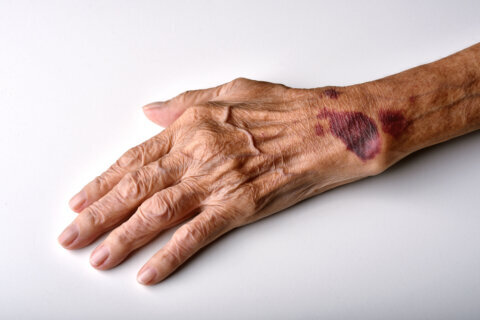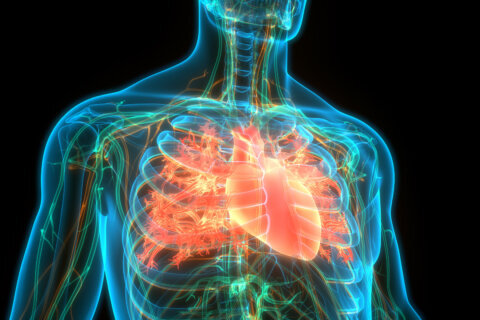This content is sponsored by MedStar Washington Hospital Center.
According to the American Cancer Society, 1 in 8 women will develop breast cancer.
Last March, the Food and Drug Administration (FDA) passed an amendment to the Mammography Quality Standards Act (MQSA) requiring all facilities to notify patients about the density of their breasts.
Dr. Brooke Wolvin, a diagnostic radiologist with MedStar Health, said the change made by the FDA is significant because when looking at a mammogram, dense breast tissue appears white while fat is dark or transparent.
“And breast cancers often are white as well, so they can be more difficult to detect on a mammogram.”
Additionally, women who have dense breasts have a slight increased risk of developing breast cancer. Breast density can only be determined through a mammogram.
“Breasts are composed of fibroglandular tissue and fat and every woman has a different ratio of those two things,” Dr. Wolvin said. “Fibroglandular tissue refers to milk glands and milk ducts – it includes supportive tissues and connective tissues we have in the breast. While fat is literally just that – it’s fat cells in the breast.”
When looking at a mammogram, radiologists classify breast tissue into four categories:
- Entirely fatty: “almost no dense breast tissue on the mammogram.”
- Scattered fibroglandular density: “the breasts are mostly fatty with a little bit of dense breast tissue.”
- Heterogeneously dense: “mostly dense breast tissue, but some fat”
- Extremely dense: “almost all dense breast tissue.”
“If you fall into the heterogeneously dense or extremely dense category, you are considered dense – and that’s about half of women,” Dr. Wolvin said.
Although it’s unclear exactly why some women have dense breast tissue and others don’t, some factors such as genetics can affect breast density.
“If your mother had dense breast tissue, you’re more likely to have dense breast tissue,” Dr. Wolvin said. “Younger women tend to have more dense breast tissue and sometimes after menopause with hormonal changes, the dense fibroglandular tissue will sort of involute or shrink, and then there’s more of the fat on the mammogram.”
Hormonal medications and body mass index (BMI) can also affect breast density.
“Women who tend to have less fat in their body, tend to have less fat in their breasts and are more dense.”
Despite the increased risk of developing breast cancer, Dr. Wolvin said it’s normal to have dense breasts and it is not a serious condition.
“It’s also important to note that it does slightly increase your risk of developing breast cancer, but having breast tissue alone does not make you at high risk of having breast cancer. That’s an important distinction.”
Dr. Wolvin said there’s nothing you can do to change your breast density, however, she notes that changes to your BMI can affect it.
“But certainly, if you increase or decrease your body mass index, there’s no guarantee it’s going to change your breast density.”
Dr. Wolvin said mammograms are still the best test to detect breast cancer early for women with dense breasts. She added that radiologists can also look for secondary signs on mammograms.
“Screening mammography is the only screening imaging modality that’s been thoroughly studied and has shown to decrease your risk of dying from breast cancer,” she said.
If you are at high risk for developing breast cancer and you have dense breasts, your doctor may recommend a breast MRI. Breast ultrasound is an additional screening that has been shown to help detect cancer, particularly in women with dense breasts.
It is important to know, however, that these tests do not replace mammography. They can be complimentary to mammograms in helping to reveal small cancers that may hide among dense tissue. But these imaging methods aren’t perfect—they can return false-positive results. This can lead to additional testing, such as additional mammogram pictures required or even a breast biopsy that is later shown to not be cancer.
The American College of Radiology recommends that a woman at average risk for developing breast cancer should begin annual screening mammography at age 40.
Women who do have dense breasts should discuss their risk factors with their healthcare providers.
“It’s important for women to talk with their health care team, have knowledge about what tests are available, and then decide for them what makes the most sense in terms of additional screening.”
Read more about Dr. Wolvin on the MedStar Health site.







